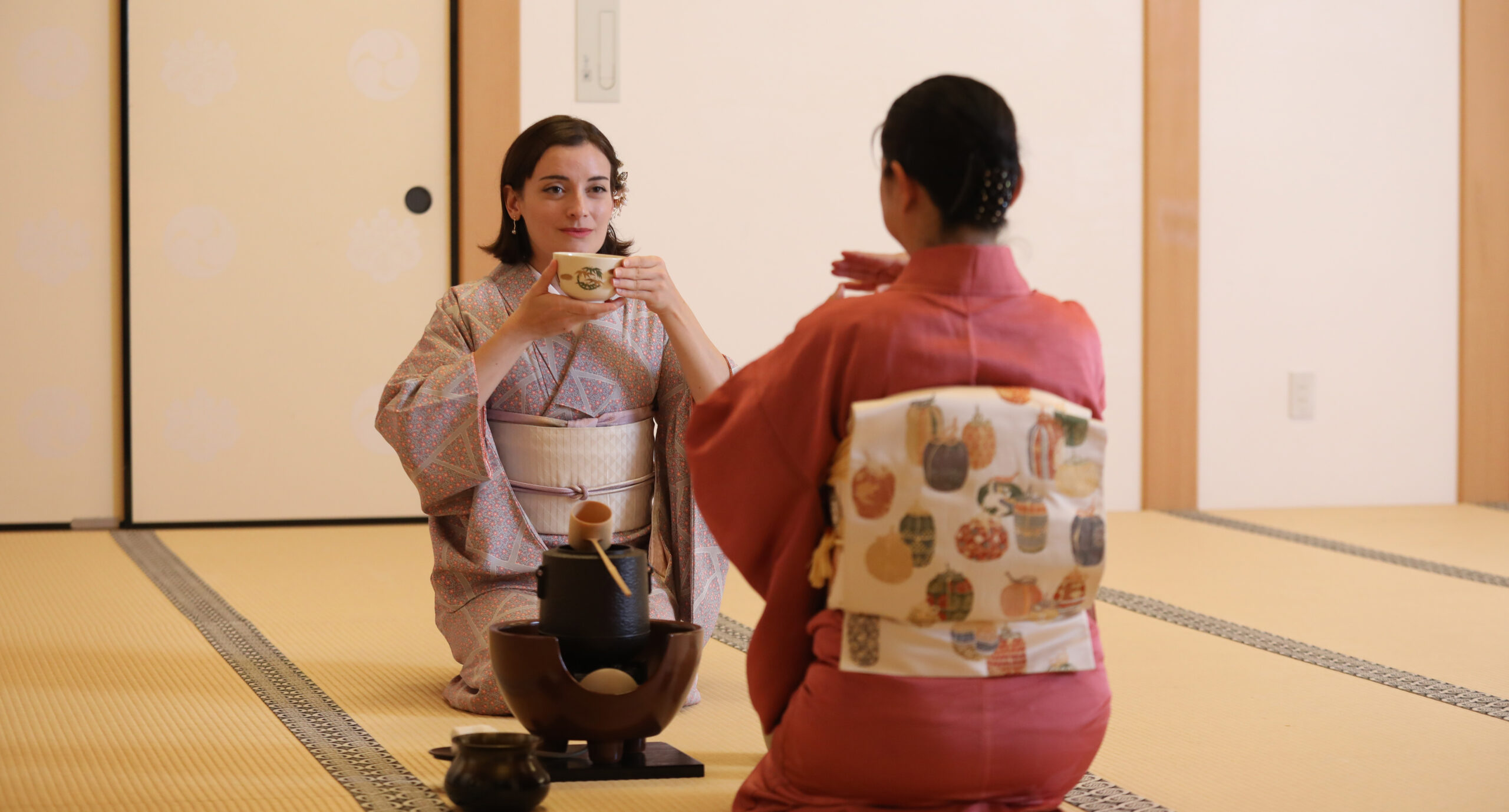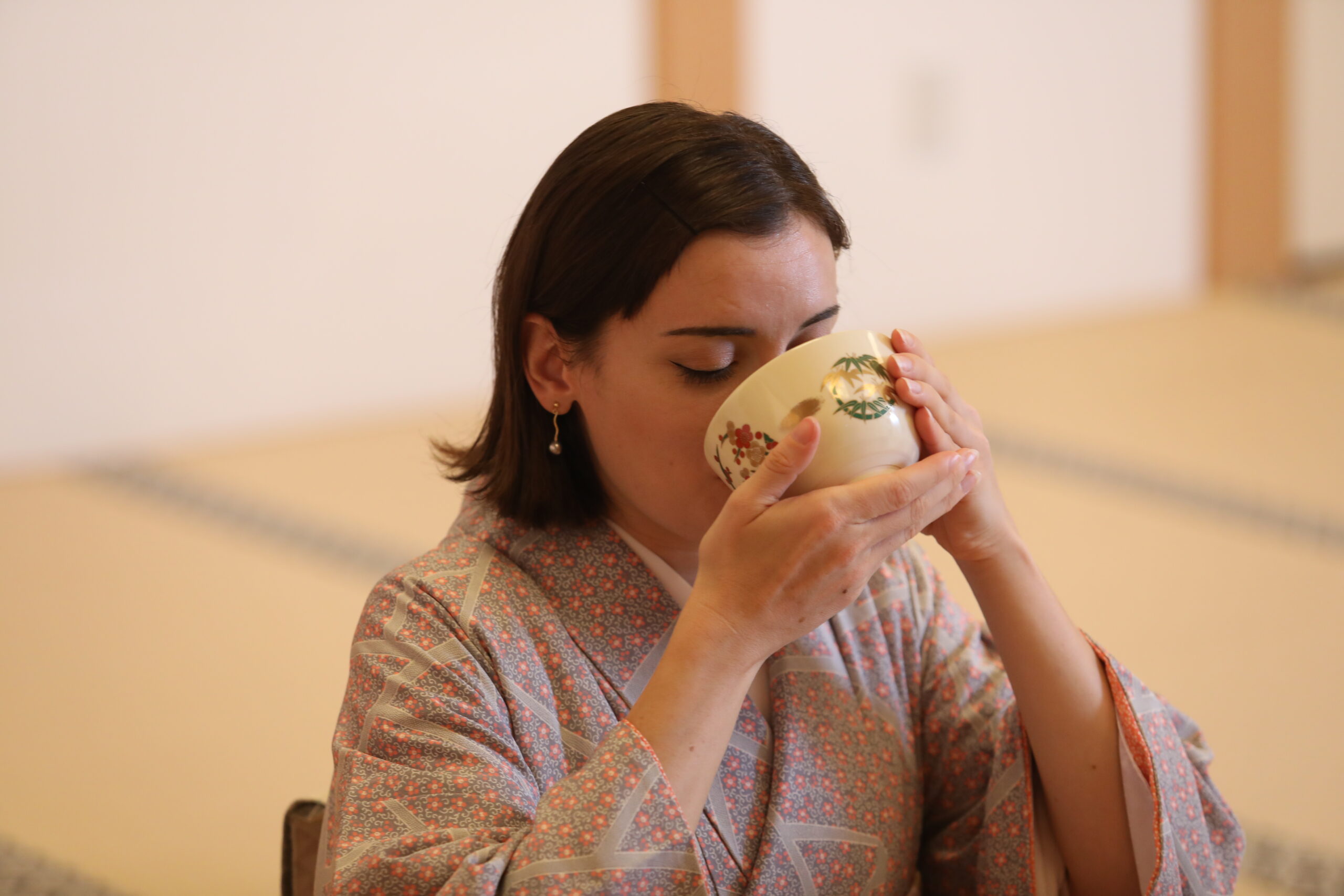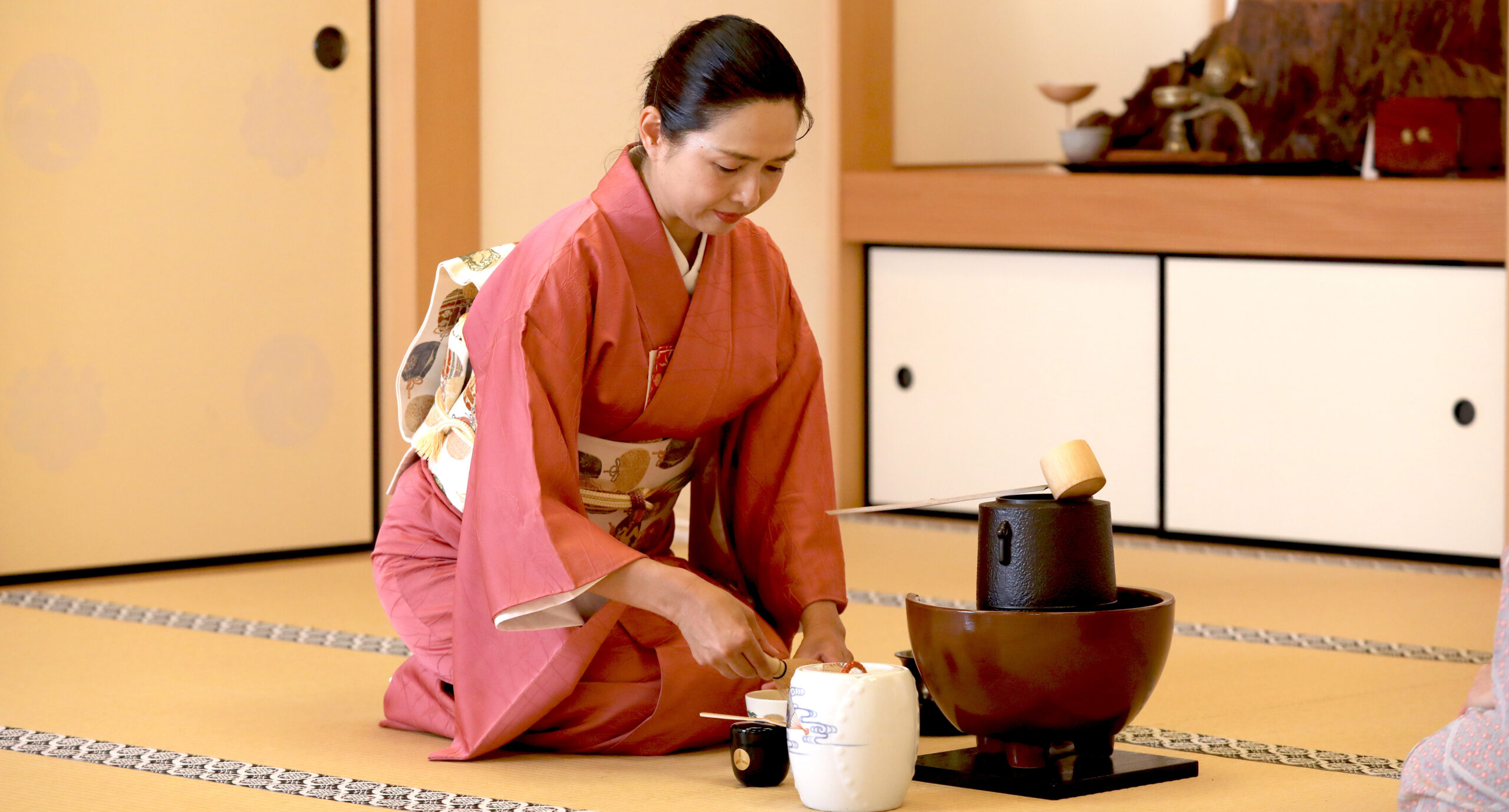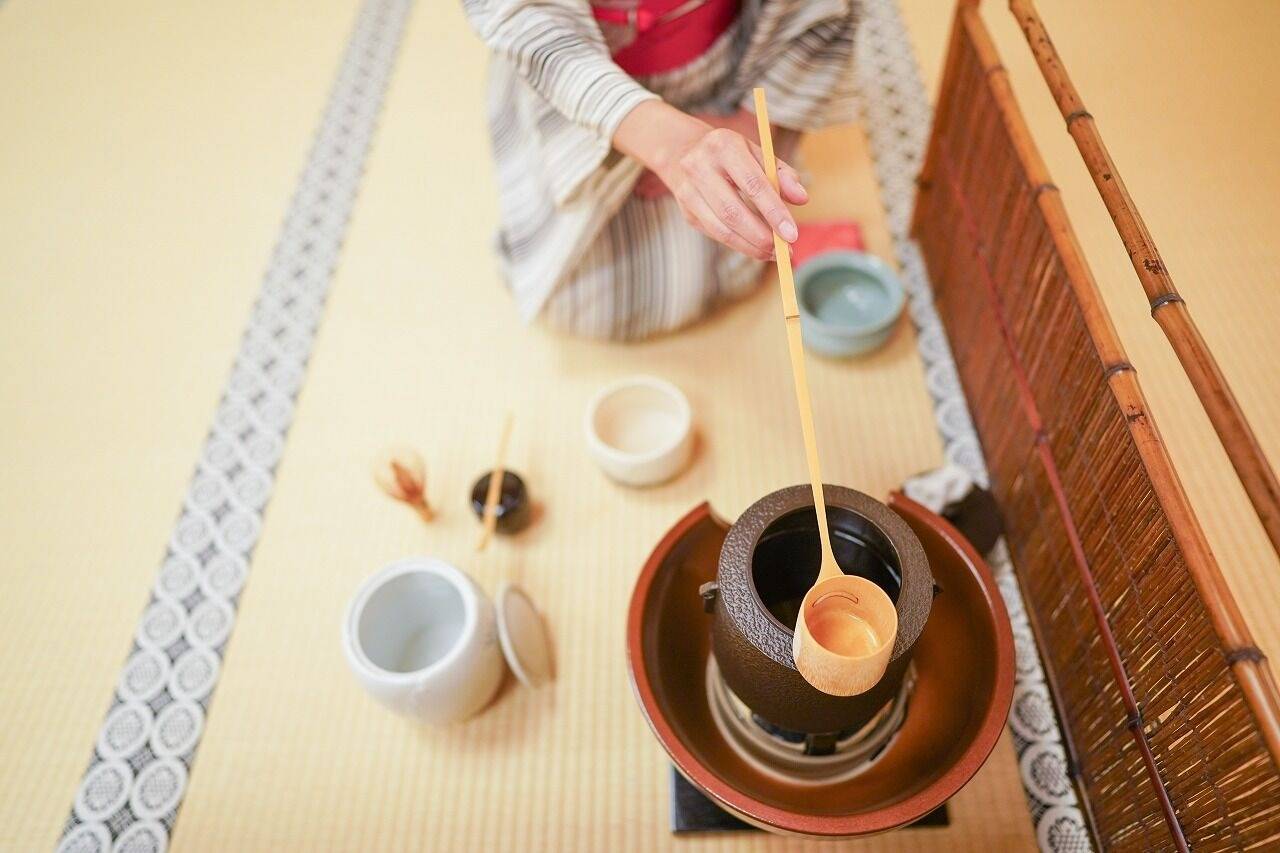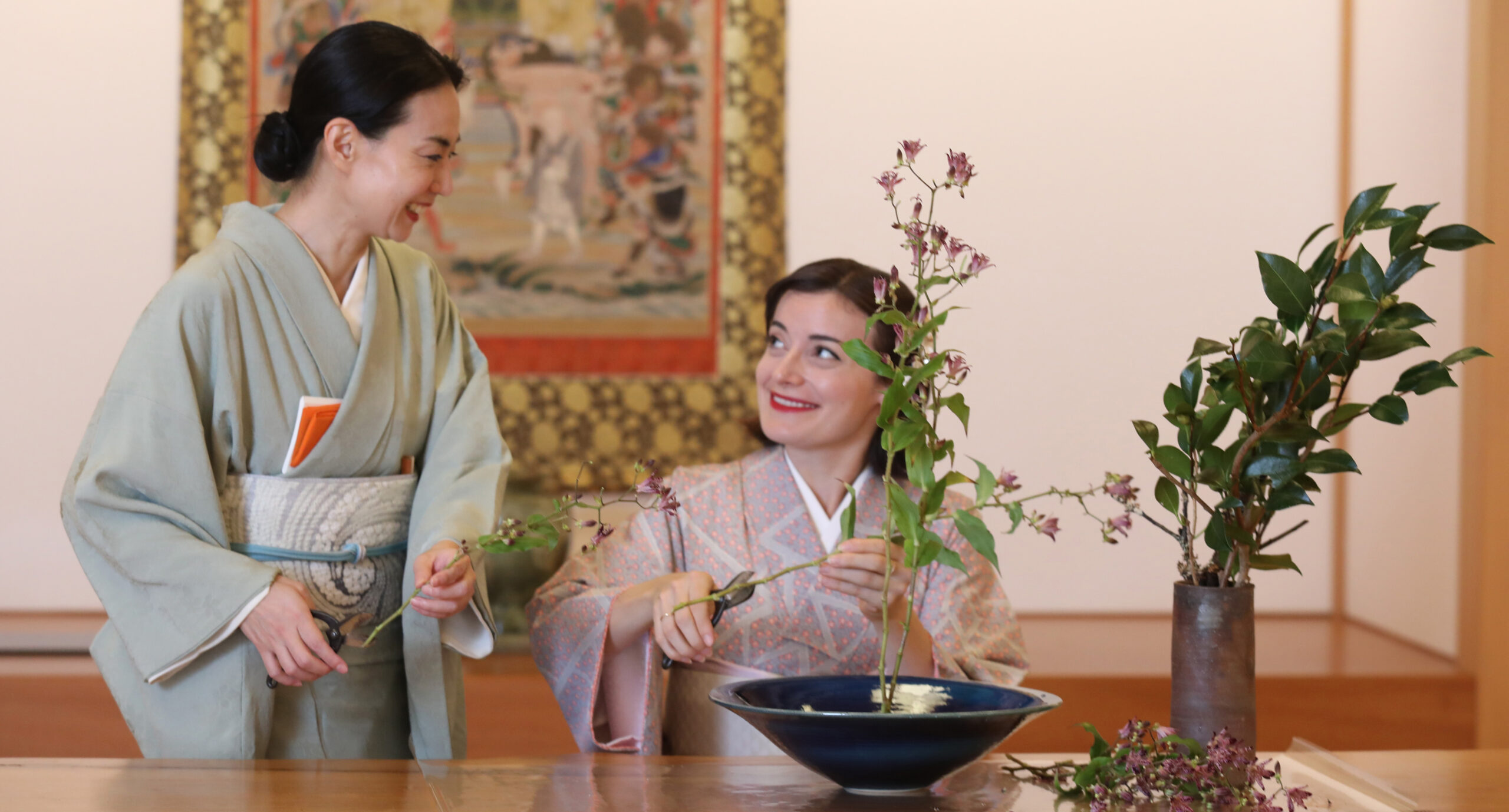There are many interesting and fun facts about Japanese tea ceremonies, the most interesting being the pure gold tea room built for the regent Toyotomi Hideyoshi in the 1500s.
While great preparation is given to the tea utensils, the tea house itself is designed to embody harmony and mindfulness. Careful organization of the artwork, flower arranging, and even interior decorating are all required in a proper tea house.
In a full tea service, the guest should be prepared to bring traditional items with them to the ceremony. These include a small fork to cut the sweets provided, a fan, a traditional paper napkin, and a small decorated cloth. This cloth is important for the shokyaku as the way he or she places this cloth on the ground signals whether the tea given to them was satisfactory or not.
Traditional tea houses have artwork, flowers, pottery, and aesthetics that change with the seasons, time of day, or a particular holiday. The ceremonies done in these tea houses have a theme and this theme is shared with the guests through the calligraphy paintings and artworks on the walls. The main scroll is the main important decoration as it could be painted by Buddhist monks, professional Shodo calligraphers, or tea masters. This should also be displayed through the fresh flowers and decorations inside and outside the tea house.
Readers usually get surprised to find out there are no chairs in tea ceremony rooms. The reason why there are no chairs in a tea house is that the floor is a tatami floor. This floor is made from reeds, straw, or rush grass and was seen as a luxury in ancient Japan. Traditional houses have tatami floors and only certain shoes should walk on its surface. The way the tatami floor is laid is important as it might bring good or bad luck into the house.
The Japanese Tea Ceremony used to be a ‘men only’ event. Up until the end of the 19th century during Edo period (1603-1868 AD), women were not allowed to attend the tea ceremony. During this time only rich nobles such as warlords, samurai, and monks could afford to drink the matcha tea.
Older tea houses have a ‘half height’ door. This has ties to the samurai era when the warriors had to take off their weapons and armor before entering the tea house. This was to promote equality between the guests and the belief that ‘all people are equal in the way of the tea‘.
Something that isn’t equal is the utensils used. There is a ceremonial ‘hierarchy of utensils‘ and is influenced by how expensive and important the item is. This influences how the host carries the utensil, what order they are brought in and out of the tea room, and at what height they are carried. The tea bowl and tea container are the most treasured utensil and are brought in first and carried carefully. The wastewater bowl is the last utensil to be carried in and is only held at waist height.
There is a range of tea bowls that you can choose from if you do host a tea ceremony. There are summer bowls that are shallow to cool the tea, or winter bowls that are deeper. Different tea bowl creators like to use a certain material, thickness or color when they make their wares.
The more expensive bowls are made by hand and any imperfections are prized and put on display during the ceremony.
Due to novels and movies such as Memoirs of a Geisha, the Japanese tea ceremony has become linked with the grace and sophistication of the geisha. Tourist destinations in Kyoto are known for offering tea ceremonies with a geisha host. During the spring, geishas can be seen preparing sweets or meals for the tea ceremony. Some tea houses let you keep the plate offered to you as a souvenir.
Classes and clubs to learn and perfect the art of the tea ceremony are important if you wish to become a proper lady in Japan. There is even a certification process that celebrates the different levels of mastery of the tea ceremony. This is very important if you attend a special tea school, such as the famous Ura, Omote, or Mushanokoji schools.

